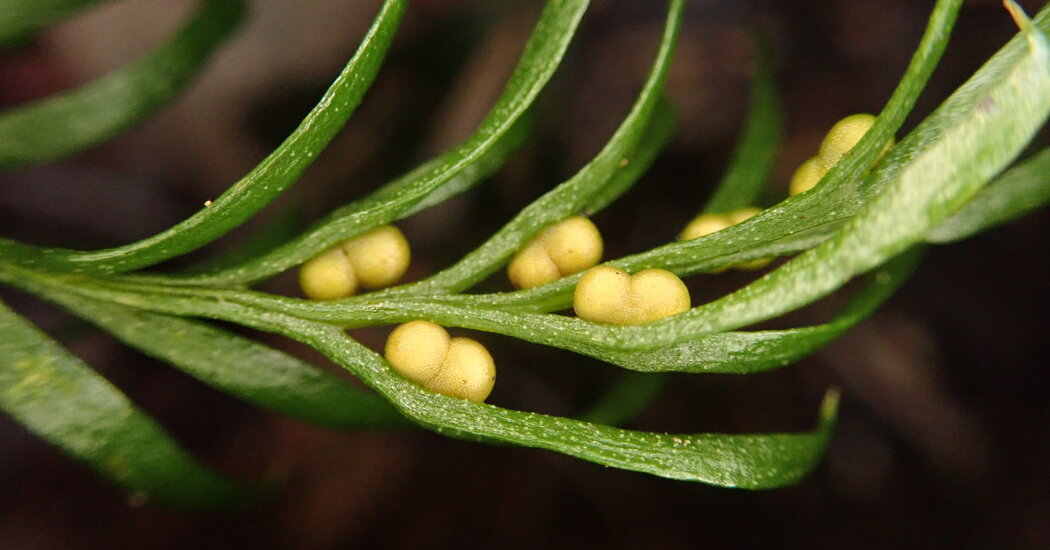Last year, Jaume Pellicer led a team of fellow scientists into a forest on Grande Terre, an island east of Australia. They were in search of a fern called Tmesipteris oblanceolata. Standing just a few inches tall, it was not easy to find on the forest floor.
“It doesn’t catch the eye,” said Dr. Pellicer, who works at the Botanical Institute of Barcelona in Spain. “You would probably step on it and not even realize it.”
The scientists eventually managed to spot the nondescript fern. When Dr. Pellicer and his colleagues studied it in the lab, they discovered it held an extraordinary secret. Tmesipteris oblanceolata has the largest known genome on Earth. As the researchers described in a study published on Friday, the fern’s cells contain more than 50 times as much DNA as ours do.
If you find it strange that such a humble plant has such a gigantic genome, scientists do, too. The enigma emerged in the 1950s, when biologists discovered that the double helix of DNA encodes genes. Each gene consists of a series of genetic letters, and our cells read those letters to make corresponding proteins.
Scientists assumed that humans and other complex species must make a lot of different proteins and therefore have bigger genomes. But when they weighed the DNA in different animals, they discovered they were wildly wrong. Frogs, salamanders and lungfish had far bigger genomes than humans did.
It turns out that genomes are much weirder than scientists had expected. We carry about 20,000 protein-coding genes, for example, but they make up only 1.5 percent of the 3 billion pairs of letters in our genome.
